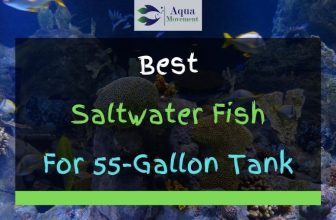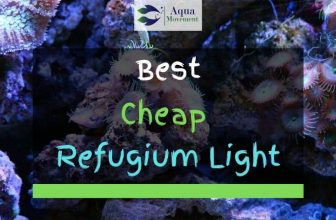Saltwater Tank Setup for Beginners
Tank set up can be stressful for anyone new to fish keeping. This is especially true if you have a saltwater tank setup.
Specialized knowledge and extra care is required to keep these aquariums. Still, with the right kind of information, and a little bit of work, anyone can prepare a saltwater tank.
In this post, we will give you that information. You will learn how to set up and maintain your saltwater aquarium with our simple instructions for beginners.
We want you to get the most out of the time and money you spent on your tank. So, in this article, we have gathered all the necessary steps and tips for a great saltwater tank setup for beginners.
Some beginners might shy away from saltwater tanks. With our guide though, you will have nothing to worry about.
Table of Contents
A Unique Habitat For Your Pet
When a saltwater tank is properly set up, they look stunning!
These structures house colorful and beautiful fish from all over the world. Often, these are fish you can’t get in a freshwater tank. With a variety of ocean plants and creatures, you can create a unique habitat for your pet.
Freshwater tanks can be beautiful and colorful, but not to the same degree as saltwater aquariums. If you want a tank that is unique and creates brilliant visual we recommend going with a saltwater tank.
The diversity of aquatic animals and fauna alone make them worthy of your consideration. But the numerous ways you can set your tank up further show off their value.
The price for these aquariums can be more expensive than freshwater tanks. But with these benefits, they are more than worth the extra cost.
Saltwater aquariums are the perfect way to bring the ocean home with you. So read on and learn how to get the best saltwater tank setup for beginners!
Have A Plan
It is important to have a plan before you go out and buy a saltwater tank and any related supplies. Getting a tank might seem like a logical first step, but this is not the case.
You need to know what kind of tank you want, and how that tank is going to be setup. Knowing if you want coral or other plants will determine the kind of supplies and aquarium you will need. Your fish also determines the size of your tank, so that should be kept in mind.
You don’t need to have a detailed list of every little thing you want in your aquarium. But at the very least know the type of fish and plants you are putting into your tank.
This way you can get the right tank and not have to go back to the store. The tank you get is one of the most important steps in this process.
In the next section, we will go over the types of tanks you can purchase and popular setups.
How To Plan A Saltwater Tank Setup For Beginners
When you are planning your setup there are three popular options to choose from. The first are fish only tanks, the second fish only with rock tanks, and the last are coral reef tanks.
Each of these saltwater tanks have their own purpose and functions.
Fish Only Saltwater Tank Setup
Video: “Beautiful Fish Only Marine Aquariums”
With a fish only tank, you will end up spending less money. This is the most basic saltwater tank setup with a focus on your fish and their visual qualities. You won’t have to bother with water condition for plants or corals.
All you have to worry about is getting your tank ready for your fish. This tank set up is common for a single species of fish or a whole community. Either way, you should be able to accommodate your pets. Usually, decorations are simple or non-existent in a fish only tank. You can put in some fake plants, or leave the water bare.
Overall, if you are new to saltwater tanks, this can be a great option. You can focus on figuring out your tank and maintaining ideal conditions for your fish. This is a low stress, low-cost setup.
Fish Only With Live Rock Saltwater Tank Setup
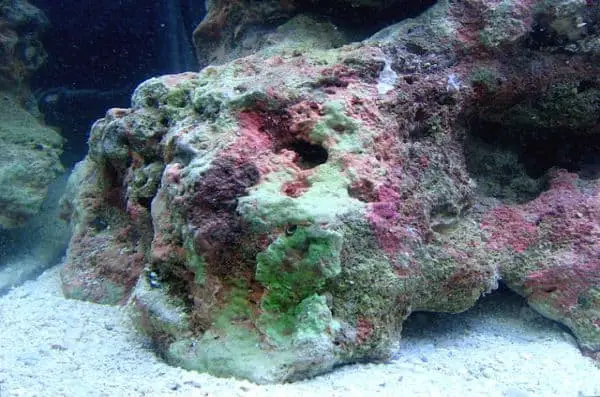
If you want a saltwater tank with more of a background, a fish only with rocks tank might be better. These tanks introduce a basic reef structure to saltwater tanks with the addition of live rock. These live rocks are usually calcium-based and come from the bodies of sea creatures. These include sponges and creatures that cultivate these structures.
While a bare fish only tank is nice, it can take a long time to cycle. With live rock, the nitrate process is sped up. It won’t take nearly as long to get your saltwater tank prepared! There are tons of live beneficial bacteria living on the surface of your live rocks. This is good not only for cycling but for keeping your water clean and oxygenated.
Live rocks have some extra needs but overall, they are not complicated to care for. This kind of tank set up with rocks and fish look interesting and create a nice home for your fish.
Coral Reef Tank Setup
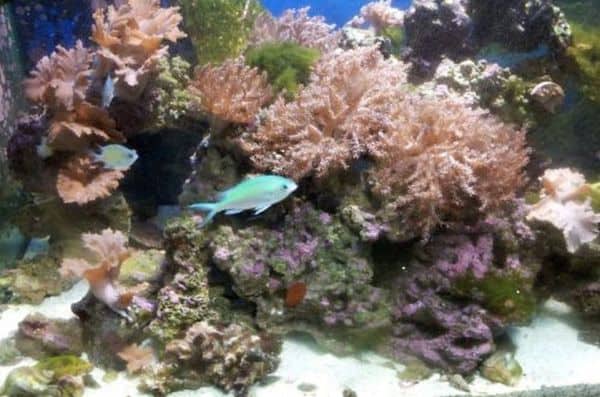
The last setup you can try out is a coral reef tank. We only recommend this option to people who are experienced with tanks or are willing to put in a lot of work.
A coral reef set up looks beautiful but requires a lot of maintenance. This option can also cost tank owners big money. You need a reef tank and a powerful lighting system to keep corals alive. Coral is not like other living organisms in tanks.
A lot of people mistakenly think that corals are plants. This is not true, they are living creatures. As such, Coral requires very specific water conditions and when these are not met they die.
A big problem for beginners and this setup is water conditions. When you have both saltwater fish and coral to care for, it can be difficult to keep the proper environment.
Your trying to figure out how to keep your fish healthy but have to worry about your coral too. This can get complicated. On the whole, coral tanks are great, but only if you know what you are doing.
Choosing A Saltwater Tank
After you have a general plan, you can choose what kind of tank you want. This is the first step in your tank setup. You need a saltwater tank before you can start preparations for your aquarium. You should not take this step lightly. This isn’t as simple as going to the store and picking out any old tank.
As we mentioned before, you need a tank that will fit your fish’s needs. If you are getting plants this also needs to be thought about. So, when shopping for your tank, you want to consider measurements and material.
Saltwater fish and fauna prefer bigger tanks to spread around in. This is where saltwater tanks can get expensive. While freshwater fish can sometimes survive in smaller tanks, saltwater fish will die in small tanks. And if you choose to have coral or other large ocean pets you will need larger tanks.
Get the proper size for your pets. You want them to live a long life. In terms of material, you can get either acrylic or glass. Both products can work for you, but we recommend getting a glass tank. Not only is it cheaper than acrylic, but it is easier to clean and lasts longer. This is only a suggestion though. If you’ve had acrylic in the past and liked it then go for it.
Clean and Prepare Your Tank
Once you have your tank, you need to get it ready for installation. You’ll want to make sure your saltwater tank is clean before you do anything to it. Soap and other chemical-based products should not be used on your tank. Stick with a cloth and some water and get rid of dust and other impurities.
Most new tanks won’t require a thorough wipe down. They just need to be lightly washed with a sponge or rag. If you get a used tank, this is a different story. You’ll need to disinfect your tank with vinegar to make sure there isn’t any bacteria or germs that will infect your fish’s water.
If you have a tank made out of acrylic make sure the material is soft. You don’t want to put scratches on your tank. Once you do this, just do a general check of your tank. Make sure there are no cracks or places where water could leak.
The best way to make sure your tank is leak-free is by adding a little bit of water. Fill your tank up a third of the way. If the water stays in the tank you are good to go. Otherwise, take your tank back to the store.
Picking A Spot For Your Saltwater Tank Setup
After your tank is clean, it is ready to be placed in a location of your choice. You don’t want to put your saltwater tank down indiscriminately. In fact, there a few conditions to keep in mind when choosing where to put a tank.
First off, don’t put your tank in direct sunlight. Direct sunlight changes the conditions of your tank water and makes a fish’s environment unstable. This could lead to health problems for your saltwater fish. In the same line of thought, you don’t want your tank near any temperature changing devices. Your tank should be kept away from heaters and air conditions.
On the whole, your fish tank needs to stay at constant conditions. When they are near external sources of heat or cold this messes with your fish’s home. This is not good for saltwater pets.
To prevent this, keep your tank somewhere visible, but a little shaded. You want to keep your tank away from doors and windows, but you don’t want to leave them in a corner. Some fish enjoy attention!
When the location is decided, make sure your tank is put on a level and sturdy area. You don’t want your tank to be unsteady and crash. As a side note, make sure this is the place you want to put your tank. Tanks get pretty heavy, so it’ll be hard to move them once they are in place.
Put in Your Filter
So you have your tank in an ideal spot. What is the next step of your saltwater tank setup?
Filter installation should be your next priority. It can take a while to set everything up so you want to do this early on.
Filters are a necessity for saltwater tanks, you want to ensure that your tank water is clean and well oxygenated. A filter will help with this.
Some people like to put a sump in for extra cleaning. This gives you more space for media and cleaning but not everyone needs this device.
There are many different kinds of filters. A lot of tank owners like to get large hang-on filters, but personally, we suggest getting a canister filter. Hang on filters are plenty powerful, but they don’t have as much media as canister filters. You will get much cleaner water with a canister filter. You will have more space for biological filtering.
Plants and live rock can provide you with good bacteria but if you don’t have these fixtures in your tank you need them in your filter.
Fish build up all kinds of waste and debris. Filters will clean all of this up through a combination of advanced filtration methods. This includes biological filtration. Just know that any pets and plants won’t survive long in dirty unfiltered water.
When set up is done, put your filter in place and leave it alone. You won’t have to turn on your filter device till you have your water in so don’t start it up yet.
Add Substrate
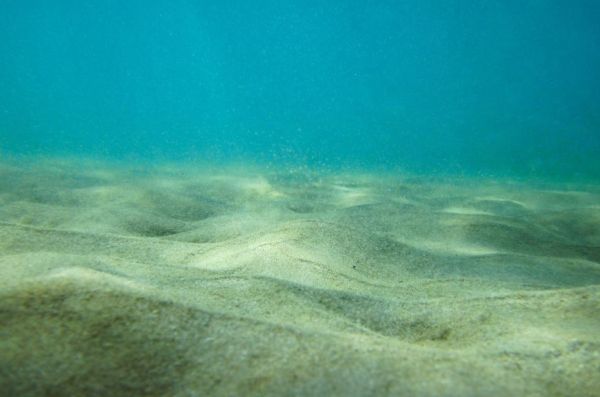
Once you have your filter installed, you can add in your substrate. This product goes in the bottom of your tank and lines it for your fish.
There are a lot of different substrate options for saltwater aquariums. You can get simple gravel, crushed rocks, or live substrate. What you purchase will depend on your tanks needs.
Live sand substrate is a great option, especially if you want extra-biological filtering in your tank. Rocky non-living material can also be used and looks nice in aquariums. But be mindful of your fish. Some ocean fish like to dig into the substrate. Some even live at the bottom of your tank.
Gravel will not be the best option for these bottom-dwelling pets. They need soft sand that is fine and won’t cut into their bodies.
Another factor to consider is water chemistry. Substrate doesn’t just sit in your tank. Some substrate media can benefit your tank water.
Substrate like crushed coral is recommended for saltwater tanks. But other calcium-based substrates can be helpful as well. If you have plants that need to be rooted also consider the type of media that will work best for them.
Whichever product you end up choosing, put it in gently. And if you get rocks to rinse them off with water. Most sand is pre-rinsed so you won’t have to worry about that.
Lighting and Other Decorations
Next, you can put in any lights or decorations. A saltwater tank setup usually requires simple lighting. LED lights are your best bet. Lighting systems with these bulbs are well-priced, energy-efficient, and come in a variety of colors.
There are plenty of great products online and in stores. Do some research to see which brand is for you. Some lighting setups can be quite advanced. If you have a fish only tank you won’t need these, unless you want a more aesthetic pleasing tank. If you have coral and other plants you will want to get a good lighting system.
Coral especially need powerful lights to survive in a saltwater tank. Some companies make LED lights specifically for coral tanks, so look into those if you plan on getting coral. Plants will also need certain levels of light. But this depends on the fauna.
If you have any other decorations, this is the time to put them in. Nonliving rocks, plants, and even caves can be a nice addition to your water. Wash off anything you put into your tank. A light rinse with water should suffice.
Put Water In Your Saltwater Tank
Now you can add in your water in. Tap water with conditioning can be used for your saltwater tank setup. But this is not ideal for fish, and if you have them, coral. Ionized water will help you create the best water conditions for saltwater tanks. So buy some of this if you can.
Slowly pour in the water, you don’t want to have substrate fly all over your tank.
Next, you’ll want to start putting in aquarium salt. Companies make products that are premixed and ready to be put in your water. You’ll want to buy one of these premixed salt packs to get your aquarium at the perfect density.
A synthetic sale mix will give you the best and safest results. Don’t put in any salt you use to eat. It has iodine and other chemicals that are not good for fish.
Most tanks need to be between one-point zero-two and one-point zero-two-five gravity. Add salt in till this gravity is reached and let it settle. It could take a whole day to reach this reading. A hydrometer will help you measure this out so get one of these as well.
Once your water is at the right gravity add in some de-chlorinator. It’s usually pretty easy to do this step. Most mixed salts have instruction and tell you the exact amount to put in.
Temperature In Your Saltwater Tank
Temperature is another important component of any saltwater tank setup. A heater is usually required for tanks, especially if you have tropical fish. A thermometer should also be fixed into your tank. You don’t need to plug your heater in right away but you want to set it up. Ocean fish require strict temperature ranges.
For most tropical fish’s you’ll want to keep the water at around seventy-six to seventy-eight degrees. Other fish might have different climate requirements. So do some research on the fish you choose. Regardless, you need to stay within your fish’s designated temperature range. If you go outside these limits your fish could die.
Thermometers and heaters help keep your water at ideal conditions. Heaters will help you set the temperature of your tank to exact measurements and keep water in a consistent state.
Thermometers add extra insurance and will allow you to check on the condition of your water. So make sure to have both of these items. Thermometers should be on one side of the tank, and the heater on the opposite side. You should be able to read your thermometer.
Heaters should be carefully installed. You don’t want overheating in your tank. So read the instructions and put the heater in the right section of your aquarium.
Nitrogen Cycle
Video: “The Best Ways to Cycle Your Reef Aquarium”
You can’t add in your pet fish right away. Even after everything in your fish tank is installed and ready to go. Your water needs to go through the nitrogen cycle. As you can imagine, tanks get dirty.
Your fish produces a lot of waste and that waste doesn’t disappear on its own. Ammonia, nitrates and other substances develop in-tank waters. The cycle is meant to make that waste less harmful to your fish.
Cycling your tank creates good bacteria that can filter your tank. This is a form of biological filtering.
Having live rocks and live sand will start the cycling process. You can grow beneficial bacteria more rapidly with these fixtures. Still, this process can take weeks or months. If your live rocks don’t begin the nitrogen cycle on their own add ammonia yourself.
All you need is to let a few fish pellets waste in the water. After this, your tank should begin growing the necessary bacteria that will fight waste. You’ll need to check the water for nitrites levels and ammonia. When these readings are at zero the cycle is done.
Put Your Fish In
Now your fish is ready to go in! Don’t just dump them in all at once. Your fish, or fishes, need to get used to the water. It’s best to turn off any tank lights to keep your fish calm.
Your fish will be in a plastic bag, float that bag in the aquarium so it can reach the same temperature. Do this for around fifteen minutes. Next, open their bag drain some of the water somewhere else. Then put in a little of the cycled tank water. You’ll need around a half cup of tank water in the bag. Do this every five minutes so the bag gets filled.
Dump half of that water out then repeat the refilling cycle with your tank water. Fill the bag up well. Afterward, you scoop your pet out with a net and into its tank. Don’t put the bag water in with your tank. Your fish should be fine in the water but look at them throughout the day.
Conclusion
A saltwater tank setup for beginners can seem complicated at first. If you are new to fish keeping it might seem impossible.
But with our guide, you have all the information you need to succeed with your saltwater aquarium.
Now, you should be able to successfully set up your tank!


